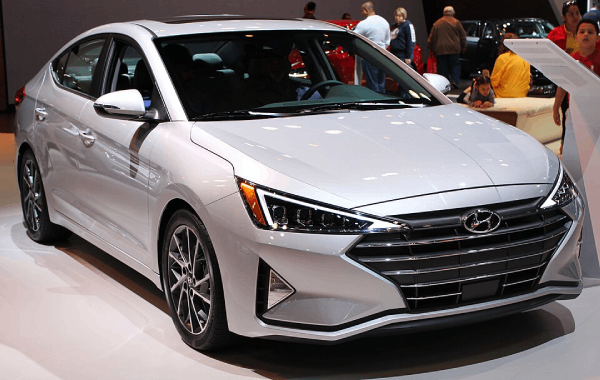Table of Contents
- Recent Examination and Overview
- Style and Trim Levels
- Standard Equipment Highlights
- New Features and Safety technology.
- Competitive Market Position
- Engines and Performance
- Infotainment and Connectivity
- Cabin Space and Comfort
- Manoeuvrability and Driving Experience
Recent Examination and Overview
How recently have we examined the Hyundai Elantra Active? In actuality, I wrote the review not much more than six months ago. Because we review so many new cars at CarAdvice, it’s easy to forget what you reviewed and when.
Anyway, since then, there has been an update, and now we are here. This time, the departing model received a respectable 8.4 overall, which is an excellent grade across all categories. The main features of those modifications are the introduction of new variations and, more importantly, the availability of active safety technology.
Style and Trim Levels
The style and new trim levels are the most noticeable improvements, although the entire breakdown was revealed back in December 2018 and can be found in the pricing and specification guide. There are now four Elantra trim levels available, including two performance and two general market models.
The entry-level Go, which starts at $21,490 before on-road expenses and comes standard with a manual transmission, is followed by the Active model we drove.
Our test Active is right in the centre of that intense warfare for those on a tight budget, with a starting price of $25,990 before on-road expenses.
Standard Equipment Highlights
Highlights of the standard equipment include a 3.5-inch driver display, a rearview camera, 6 airbags, tinted windows, 16-inch alloy wheels, rear parking sensors, power-folding exterior mirrors with LED side indicators, a leather-trimmed steering wheel and shift knob, an 8.0-inch central touchscreen with satellite navigation that offers 10 years of free mapping updates, Apple CarPlay and Android Auto, DAB+, and an eight-speaker Infinity audio system.
New Features and Safety technology.
First off, this new Active is the first Elantra available locally, boasting an 8.0-inch touchscreen and built-in satellite navigation. You can use the proprietary satellite navigation even if you have Apple CarPlay or Android Auto connected, much like Hyundai products.
We would advise spending $1700 on the extra SmartSense bundle, which is only available with an automatic transmission. Active safety features like adaptive cruise control, blind-spot monitoring, rear cross-traffic alert, lane-keep assist, driver-attention monitoring, and autonomous emergency braking with pedestrian recognition are added.
Yes, $1700 is a substantial enough price increase to be noticeable, but the safety technology included in the kit is helpful, especially for younger drivers. Additionally, although this technology is an expensive alternative, the previous model’s complete lack of availability was a disappointment.
Competitive Market Position
This part is hard, and it’s as competitive as it was when I wrote about it in October. Consider the Volkswagen Golf, Ford Focus, Honda Civic, Mazda 3, Peugeot 308, Renault Megane, Subaru Impreza, and Toyota Corolla.
Customers can choose from a wide range of options that encompass standard equipment, pricing, appearance, and substance. However, Hyundai’s guarantee, value for money, and operating expenses all combine to make it an appealing offer.
Engines and Performance
Hyundai’s well-known MPi 2.0-litre gasoline engine, which produces 192 Nm at 4700 rpm and a decent 112 kW at 6200 rpm, is located beneath the bonnet. This engine can run on 91RON or even E10 if you don’t like the price of 95RON and 98RON. However, I wouldn’t ever put E10 in anything I own.
We observed an indicated return of 10.1 L/100 km against an ADR claim in the low sevens, which is not too awful considering that the majority of our testing was conducted in stop/start traffic around town.
Infotainment and Connectivity
Hyundai’s infotainment system is simple to use, clear, and succinct as always. The proprietary system is easy to use, and we discovered that CarPlay also functions flawlessly. The eight-speaker audio system produces excellent sound quality, and I love that you don’t have to worry about your smartphone’s navigation overriding the factory system if you’d prefer it didn’t.
I prefer my phone’s navigation, but I like that you don’t have to use it.
For those of you who would rather connect wirelessly, Bluetooth is also incredibly clear and dependable, and there is enough clever storage to keep a big smartphone out of the way without stumbling around the cupholder or centre console.
Cabin Space and Comfort
As it has been for a while, the Elantra’s cabin does, in fact, have a noticeable amount of space. Although there is plenty of room for storing all the typical little stuff, the amount of occupant space is ridiculous for a compact car.
Four tall adults can be transported with ease thanks to the front seats and second row, and the atmosphere of the cabin is excellent if you want to talk to the other passengers.
In addition to having plenty of head and shoulder room, second-row seats are also quite comfy. The glovebox can conceal valuables of a respectable size, and the console bin and door pockets are very practical.
Manoeuvrability and Driving Experience
I adore the Elantra’s physical size since it makes it easy to navigate crowded streets, parking lots, and shopping malls. Its visibility, small turning circle, and exquisitely weighted steering at low speeds all contribute to this.
Even though more Australians are purchasing larger vehicles, particularly SUVs, a short drive about town in the Elantra will clarify it that a little car may be far more fun.
Although it is hardly a powerhouse, it functions adequately in the city thanks to its smooth engine and efficient six-speed gearbox. We had the exact same experience driving the previous model in every way late last year. With the exception of pinging the engine right up at redline, which is not necessary

Leave a Reply